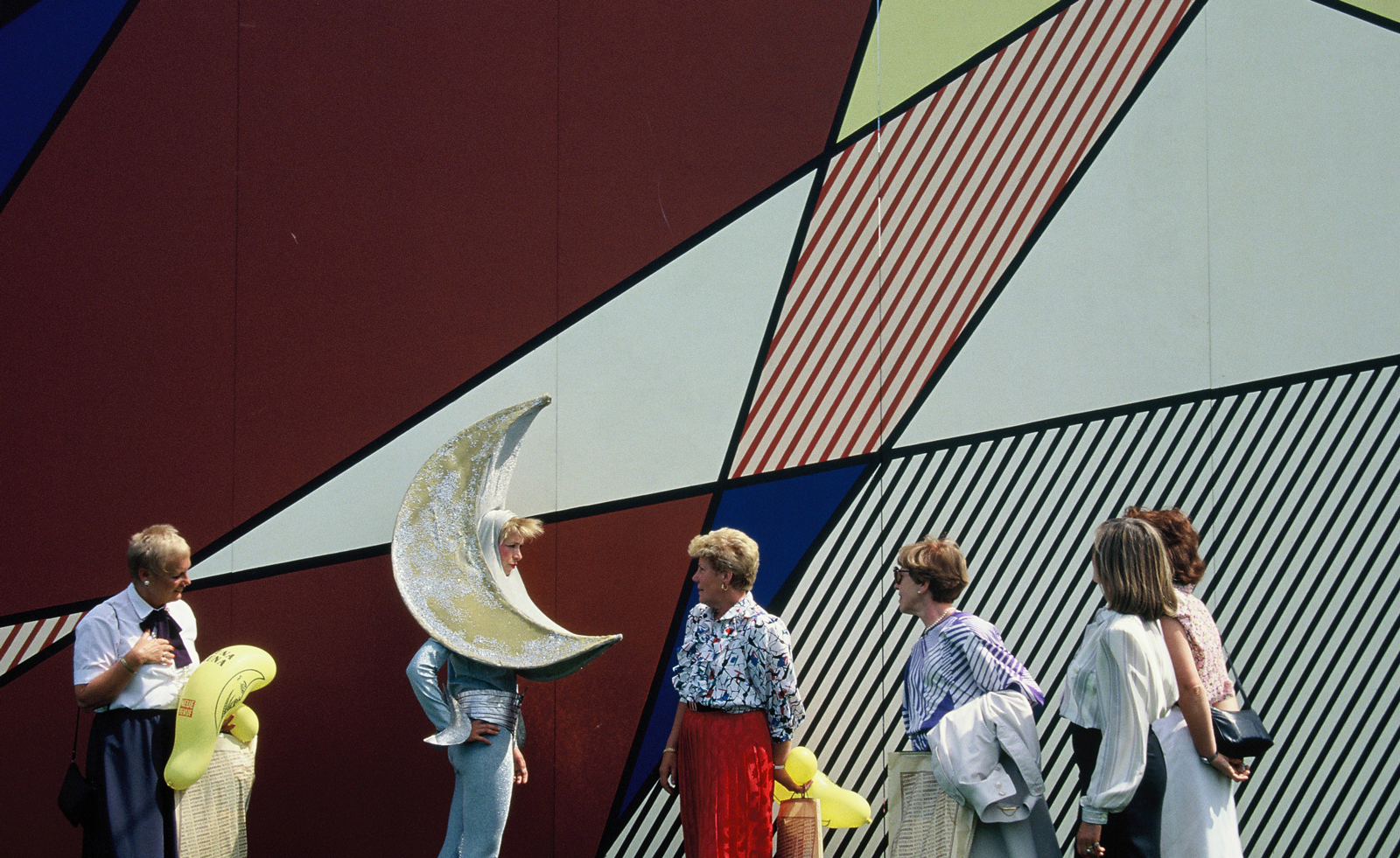
When Viennese artist and pop singer André Heller embarked on his quixotic plan to create an amusement park with the biggest artists of the 1980s, he envisioned bringing it to New York. This was not only because some of the park’s splashiest contributors – such as Keith Haring, Jean-Michel Basquiat, and Roy Lichtenstein – lived in New York, but also because the city was a hub for experimental creativity and tolerance, which were fundamental in Heller’s message with his park, Luna Luna. Thirty-seven years after the park’s inaugural opening, in Hamburg, Germany, the carnival has finally landed at The Shed in New York for a run of more than a month (until 5 January 2025).
The original theme park featured around 30 rides designed by the world’s most influential artists at the time, such as Joseph Beuys, Sonia Delaunay, Rebecca Horn, Salvador Dalí, and David Hockney – in addition to downtown New York icons Haring, Basquiat and Kenny Scharf. Its 1987 stint in Hamburg, where the funding came from, drew an attendance of around 300,000 people in three months. Later, however, there followed decades-long obscurity as Heller’s plan to take his artistic fantasy on tour never came to fruition.

When Michael Goldberg, founder of creative agency Something Special Studios, read about what sounded like an urban legend online, the rides’ disassembled parts were being stored in 44 shipping containers in a Texas facility. He reached out to Heller in 2019 with an offer to revitalise the most ambitious undertaking of his career. ‘He was still mourning the project because he was so proud of it,’ Goldberg tells Wallpaper*. The creative director’s initiative was quite timely because Heller was seeking ways to re-exhibit the park. An injection of $100 million of funding from rapper Drake’s entertainment company DreamCrew turned Heller’s whimsical dream and Goldberg’s ambition into reality, and ‘Luna Luna: Forgotten Fantasy’ opened to the public earlier this year in east Los Angeles.
Whimsical, bizarre, and grandiose, the installation of 13 restored rides, in addition to a newly commissioned work by the Puerto Rican artist duo Poncilí Creación, resonates with the traditional understanding of European amusement parks where an absurdist reverie blends with uncompromising potpourri of lights, colours, and music.
Here, however, the experiences are crafted by the 20th century’s canonised artists without compromising their signature practices. Due to their fragile conditions, the rides are not available for interaction, but the lighting design by John Torres, who has worked with Robert Wilson, Solange, and Lady Gaga, washes the installation with what the project’s creative director Charles Dorrance King describes as ‘a touch of dynamism and momentum to prompt enthusiasm to use your imagination’.

Basquait’s ferris wheel, for example, is covered with references to jazz musician Charlie Parker and racism (the words ‘Jim Crow’ on the ride’s front), while Miles Davis’ 1986 song ‘Tutu’ echoes in accordance with the wheel’s imaginary turn.
Dalí’s mirror room signals an early jab at the now ubiquitous immersive art experience with a pavilion that surrounds visitors with their own reflection, in the Surrealist maestro’s mind-bending fashion.
Haring’s carousel is a testimony to the artist’s unabashed assumption of joy, in service of igniting discussion and awareness about social turbulence. Larger-than-life radiant babies serve as seats, rotating under a purple carve-out of more babies, all crowned by a massive baby with their arms raised with glory. Created three years before Haring’s passing due to AIDS-related illness, the insistent jubilance of a childhood ritual embodies the project’s underlying theme of seeking comfort, and putting a pause on reason. This invitation to let go also echoes in the fact that the park had its debut in Germany at a time when the Berlin Wall continued to divide the country, and the AIDS crisis was sweeping through the artist communities in the US and elsewhere.
After the revived park’s sophomore stop in New York, the organisers are determined that it will continue its journey in the US and elsewhere. ‘We will recompose and reconfigure the whole exhibition to each time tell a different story,’ says Goldberg.
‘Luna Luna: Forgotten Fantasy’ is open through 5 January 2025












